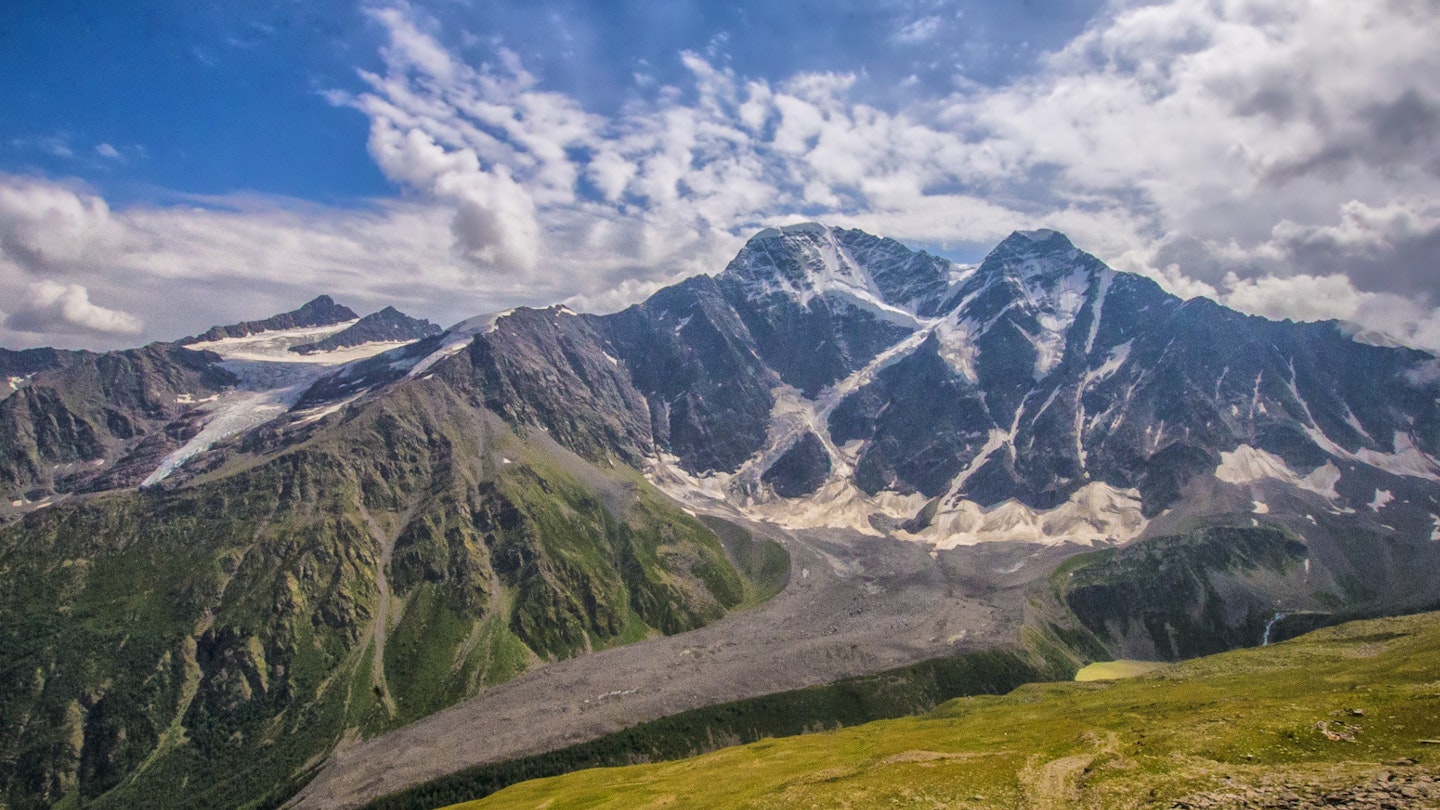Climbing Mt Elbrus: Europe’s Highest Mountain
The line of figures in full winter gear snakes painfully slowly across the snowfield towards the summit. The climbers have been ascending for over 12 hours now. Lack of oxygen, deep cold, and pure exhaustion is taking its toll, but in a few minutes, all this will be forgotten beneath the joy and adrenaline of summiting Mt Elbrus, the highest mountain in Europe. Magnificent views await on this great outdoor adventure – here’s how to find them.
Europe’s Watchtower
When people think of mountaineering in Europe, they tend to think of the Alps, ski resorts, and prettily perched mountain villages. Forget the French Alps though – it’s the Russian Caucasus that is home to Europe’s highest mountain, Elbrus.
At 5642m, Elbrus and its double-coned volcano is 832m higher than Western Europe’s highest mountain, Mont Blanc. It’s a certified member of the ‘seven summits’ – the highest point on every continent – and is coveted by mountaineers everywhere.
Despite its formidable stature, Europe’s highest peak can be climbed by most, but it doesn’t come without challenge or commitment.
What to Expect
- Terrain: Snowfields of blinding white ascend gradually, allowing climbers to see far and wide. The snow can be deep and soft or, in peak season, firm and crunchy underfoot. In one section, climbers must use fixed ropes alongside a steep gradient with a vertiginous drop to the basin below. Guides are available to assist.
- Weather: The weather on Elbrus can be harsh and unpredictable. Climbers may begin their ascent under clear skies only to face wind and snowfall moments later. Icy temperatures frequently plummet to well below freezing, especially at night.
- Accommodation: Climbers typically spend the first two nights in a tourist-class hotel at Terskol village for equipment organization and acclimatization treks. On the mountain, climbers stay at a refuge in simple huts located at 4000m, accessible by cable cars, chairlifts, or a one-day trek from Garabashi.
- Altitude Sickness: Climbers on Elbrus will experience some form of altitude sickness, with approximately 50% less oxygen at the summit compared to sea level. Symptoms often arise shortly after ascending above 2400m and can include headaches, loss of appetite, and shortness of breath. Regular acclimatization treks, hydration, and ample rest are crucial.
- Acclimatization: Taking at least three acclimatization treks before the summit push is highly recommended: one from Terskol village up to 3000m on Cheget Peak, and at least two more from the refuge on Elbrus to Priyut 11 (4200m) and Pashtuhova Rocks (4750m). A rest day is essential between the final acclimatization trek and summit day.
- Summit Day: Most climbers rise around midnight and depart by 1am for the most rewarding day of the trip. The initial hours are spent climbing in darkness using head torches. Climbers aim to reach the summit between 10am and midday before descending to the refuge by 3pm. The summit views are nothing short of magnificent, with the Caucasus peaks stretching as far as the eye can see.
Preparation
- Training: Fitness is paramount when climbing Elbrus. The trek is demanding, particularly on summit day, which can entail a 12 to 15-hour round trip. Training should incorporate climbing conditioning, cardiovascular fitness, and strength exercises.
- Skills: Experience in winter hillwalking using mountaineering boots and equipment is beneficial. If climbing with a guide, crash courses should be included in the itinerary.
- Equipment: Essential items include warm winter clothing, waterproof Gore-Tex outerwear, a climbing harness, mountaineering boots, crampons, and an ice axe. Guiding companies usually provide a detailed equipment list prior to the climb.
Practicalities
- When to Go: The climbing season on Elbrus runs from late April to mid-September, with July and August being the most stable for weather conditions. For quieter slopes, consider climbing earlier or later in the season, though be prepared for colder and less predictable weather.
- Choosing a Guide: Organizing your climb through a guiding company is strongly recommended unless you’re an experienced mountaineer. An eight-day program typically includes all accommodation, meals, internal transfers, guides, and mountain permits.
- Flights and Visas: Mineralnye Vody is the main gateway to the Russian Caucasus. Check international flight connections through Moscow, Istanbul, or Dubai. Most visitors require a visa, which should be applied for at least a month in advance; further information is available on relevant visa websites.
This article was first published on January 4, 2018, and updated on November 2, 2021.





